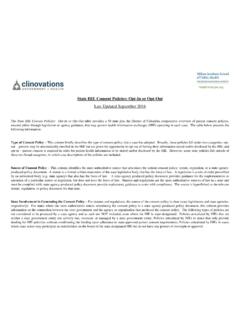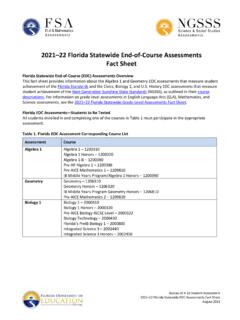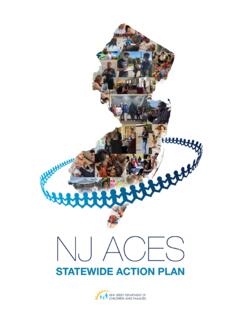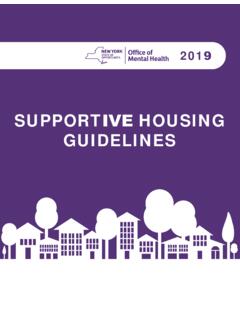Transcription of DAS Statewide Policy - Oregon
1 Policy : 1 of 8 Effective: 2/22/2022 State HR Policy Policy STATEMENT: This Policy establishes standards for the equitable and consistent administration of pay. Agency appointing authorities ensure that pay actions taken in their agencies meet the Policy standards. Agencies maintain documentation of pay exceptions allowable under this Policy . AUTHORITY: ORS ; ; ; ; ; ; ; ; (1); 659A, Equal Pay Law , ; ; OAR 839-008-0000 thru 839-008-0035 APPLICABILITY: Classified unrepresented, management and unclassified executive service, unclassified excluded and unclassified unrepresented, limited duration and temporary employees. Applies to represented employees only for the purposes of pay upon initial hire and agency documentation requirements, where not in conflict with an applicable collective bargaining agreement. ATTACHMENTS: Pay Equity Appeal Procedures DEFINITIONS: Also refer to State HR Policy , Definitions Base salary: For the purposes of this Policy , a PERS participating member s base salary rate is the P range option of the compensation plan.
2 A PERS non-participating member s base salary rate is the A range option of the compensation plan. Compensation: includes wages, salary, bonuses, benefits, fringe benefits and equity-based compensation. Compensation does not include tips or reimbursement for any actual costs incurred including, but not limited to, relocation reimbursements, mileage, and out-of-pocket expenses. Education: means the act or process of acquiring knowledge through systematic instruction, especially through an accredited academic institution. Education considerations may include, but are not limited to, substantive knowledge acquired through relevant coursework, as well as any completed certificate or degree program. Equal-pay analysis: means an evaluation process to assess and correct wage disparities among employees who perform work of comparable character. SUBJECT: Pay Practices NUMBER: DIVISION: Chief Human Resources Office EFFECTIVE DATE: 2/22/2022 APPROVED: Signature on file with the Chief Human Resources Office Policy : 2 of 8 Effective: 2/22/2022 State HR Policy Pay Practices Experience: means the process of gaining knowledge or skill from doing an activity, particularly by holding a position in a specific professional field or occupation.
3 Experience considerations include, but are not limited to, any relevant experience that may be applied to the particular job. Internal Assessment: means an evaluation by an agency to determine the appropriate, equitable salary rate for a candidate, or an employee relative to the current workforce performing work of a comparable character based on a factor or a combination of the factors listed in ORS (2). Merit system: means an orderly progression of an employee s pay from the established minimum to maximum rate of a salary range based on documented performance. May include salary adjustments resulting from promotions, special merit increases or other personnel actions. A merit system provides for variations in pay based upon employee performance as measured through job-related criteria, for example, a written performance evaluation plan or Policy that measures employee performance using a set numerical or other established rating scale, such as from unsatisfactory to exceeds expectations, and takes employees ratings into account in determining employee pay rates.
4 New Hire: means the appointment of any person into state service, regardless of status ( , temporary, permanent, limited duration, seasonal, etc.). Not included in this definition are reemployments, return from layoff or retiree appointments within two years of retirement. Protected Class: means a group of persons distinguished by race, color, religion, sex, sexual orientation, national origin, marital status, veteran status, disability or age. Seniority system: recognizes and compensates employees based on length of service with the employer and how it relates to their salary, benefits and employment rights ( , step increases, vacation leave accrual, layoff rights, etc.). Training: means the process by which someone is taught the skills needed for a job. Training considerations may include, but are not limited to, on-the-job training acquired in current or past positions as well as training acquired through a formal training program.
5 Work of comparable character: means work that requires substantially similar knowledge, skill, effort, responsibility and working conditions in the performance of work, regardless of job description or job title, as defined in OAR 839-008-0010. Working conditions: includes work environment, hours, time of day, physical surroundings and potential hazards encountered by an employee, as those terms defined in OAR 839-008-0010. Policy : (1) Pay Equity Policy : 3 of 8 Effective: 2/22/2022 State HR Policy Pay Practices (a) It is the Policy of the state to comply with all aspects of the Equal Pay and Wage and Hour laws, including the prohibitions of: A) Seeking the salary history of an applicant from the applicant or a current or former employer of the applicant before the employer makes an offer of employment to the prospective employee that includes an amount of compensation; B) Determining compensation for a position based on current or past compensation of a prospective employee new to state service; C) Discriminating between employees based on an employee s status as a member of a protected class in the payment of wages or other compensation for work of comparable character.
6 (b) The state may pay employees for work of comparable character at different compensation levels if all of the difference in compensation is based on a bona fide factor including: A) A seniority system; B) A merit system; C) Education; D) Training; E) Experience; or F) Any combination of these factors, if the combination of factors amounts for the entire compensation differential. (c) Equal Pay Analysis (A) The Department of Administrative Services (DAS) may conduct an equal pay analysis on Oregon state government s workforce. (B) Agencies will make salary adjustments according to the findings from DAS s equal pay analysis. Salary adjustments will generally be effective on the date the equal pay analysis is complete. An employee s pay shall not be reduced as a result of an equal pay analysis. (C) Employees may appeal the equal pay analysis findings following the Pay Equity Appeal Procedures attached to this Policy . (d) Equity Adjustment An agency appointing authority, or management designee, with the approval of the Chief Human Resources Office (CHRO), may grant an equity adjustment to correct pay inequities, identified by the agency s internal assessment, between employees who perform work of a comparable character.
7 An equity adjustment will not include the reduction of any employee s pay. (A) Equity adjustments will generally be effective on the date of the internal assessment request. Policy : 4 of 8 Effective: 2/22/2022 State HR Policy Pay Practices (B) Agencies retain documentation for the established rate of pay for all equity adjustments. (e) Request for an Internal Assessment An employee may request the agency complete an assessment of the employee s salary relative to the current workforce performing work of a comparable character. (A) The agency shall establish a procedure for employees to request an internal assessment. The procedure shall include the following: The employee shall submit a written request and base it on: (i) One or more factors identified in (b); and (B) If an equity adjustment is appropriate, the agency will follow Section (d) above. (C) If the equity adjustment is denied, the agency will provide a written reason for the denial.
8 (D) The agency shall issue a notification of the determination within 60 days from the date of the employee s request unless both agency and employee agree in writing to an extension. (E) Employees may appeal the internal assessment findings following the Pay Equity Appeal Procedures attached to this Policy . (2) Pay Administration (a) Classification Changes For information on administration of pay on classification change, refer to State HR Policy Effect of Position Classification Change on Incumbents. (b) Demotion (voluntary or involuntary) At the time of a demotion, the appointing authority: (A) Reduces the employee s pay to the top step of the new classification if the employee s current pay is above the top step of the new classification; or (B) Maintains the current pay if the employee s pay is within the range for the new classification unless an internal assessment warrants a higher pay rate within the range.
9 Agencies must retain documentation of the assessment and determination of the established rate of pay. If the current pay is off-step within the new classification, increase at least one full step (to be on a step) in the new classification at the next salary eligibility date (SED), but do not exceed the top step of the new salary range.; and (C) Maintains the SED unless the employee is at the maximum of the new salary range. Policy : 5 of 8 Effective: 2/22/2022 State HR Policy Pay Practices (c) General Wage Adjustments (A) When the DAS implements a general increase (also referred to as a cost of living adjustment ), agencies retain an employee at the same step or rate in the salary range. Agencies generally retain an employee s salary eligibility date. (B) When DAS implements a compensation plan adjustment with no accompanying general increase, agencies retain an affected employee at the existing salary with no increase unless the employee s current salary rate is below the first step of the new salary range.
10 In this case, the agency places the employee s salary rate at the first step of the new salary range. Employees generally retain their salary eligibility dates. (d) Job Rotation (A) For a career enrichment job rotation, employees may receive a 5 percent increase from the employee s current base salary when rotating into a position in a higher salary range. If the 5 percent increase falls below the lowest step in the new classification, place the employee on the first step of the new salary range. (B) Agencies must remove any differentials from the employee s base position if the differential is not applicable to the job rotation. (C) See State HR Policy for further information on job rotations for classified unrepresented and management service employees. (e) Lump Sum Payments (A) An agency may give a lump sum payment to an employee at the time of hiring, promotion, or lateral transfer in difficult recruitment situations.

















